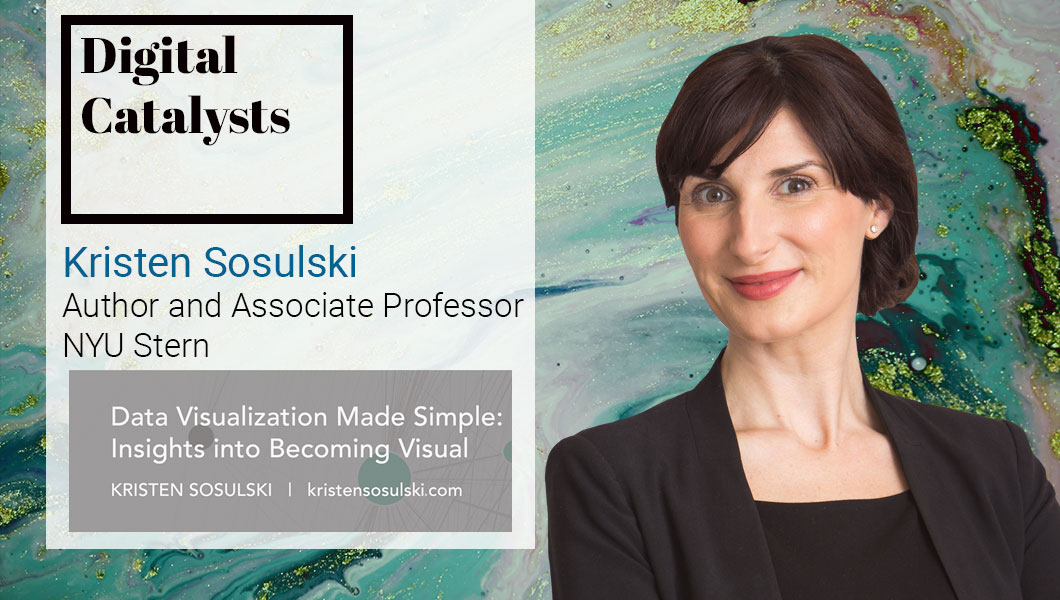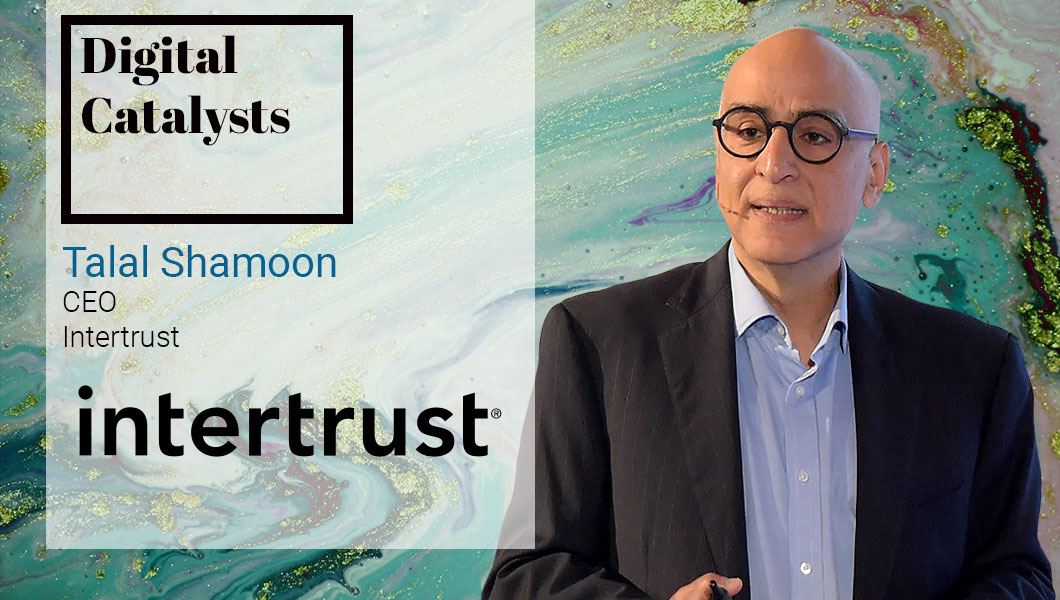Interview with Dr. Kristen Sosulski, Consultant on Data Visualization and Learning Technologies

In this interview, Dr. Kristen Sosulski speaks about the challenge with data silos, she stresses how data visualization can aid in byte-sized comprehension and reiterates the importance of data-driven decision-making. As a leading expert on data visualization, Kristen regularly consults, delivers seminars, and leads workshops on data visualization techniques and best practices
Tell us a little about your business and your specific role?
I equip and train executives and MBA students to mine, use, and visualize data in my role as an Associate Professor at New York University’s Stern School of Business. My area practice and scholarship lies at the intersection of business analytics and learning science. I’m also the Director of Learning Sciences at NYU Stern where I build and study the effective use of digital technologies for learning, including online courses, apps, interactive media and learning management platforms. I’m the author of Data Visualization Made Simple: Insights into Becoming Visual (2018), Essentials of Online Course Design: A Standards-based Guide (2015; 2011) and The Savvy Student’s Guide to Online Learning (2013).
What is the typical nature of challenges you encounter from enterprises looking to move the needle on digital transformation?
Obviously, there are enormous challenges with change in organization. It begins with the culture of the company and their digital practices. At the most fundamental level, organizations may lack the expertise needed to really make an impact. For example, to leverage the capabilities of machine learning and AI, the organization must have a data practice. This involves a data science team and more importantly, that leadership has insisted on and adopted a data-driven, decision-making culture. In other words, that organizations use data to drive their decision-making.
Another challenge that is quite common, but basic, is that data tends to be siloed or inaccessible to those that could benefit from it most. Without access to the necessary data, companies are losing out on the opportunities afforded through business intelligence and analytics.
Using technology to effect transformation usually starts with a transformation of beliefs and mindsets. How do you consult executives and students and help them make that important shift in mindset to move ahead on a particular project or implementation?
Presenting clients with the value proportion is key to affecting digital transformation of practices within an organization. Take something as simple as using data as evidence to support decision-making. You need to connect with your clients and show them the value of using data graphics, for example, as tools for analysis and communication. When you are trying to sell an idea, pitch a concept, or communicate performance results what would you rather present: A spreadsheet with the raw data? Or a graphic that shows the data analyzed in an informative way? You would want to show your insight so that it could understood by anyone from interns to executives.
What processes have you found useful when implementing digital technologies for these executives and students?
First, you should start small. Don’t commit, until you are ready. Give yourself time to gather the data and evidence you need to know how the new technologies fit into the greater strategy of the organization. Use cases or scenarios will need to be developed for how the new tools will be used by the stakeholders in the organization. This may require getting in to the weeds a little bit.
Second, you should have a process and plan. When you decide that the pilot works out, then someone needs to follow through, not just through launch.
Third, you should build a team of expert users.
Internal experts are key to supporting the backbone of any new technological implementation.
Fourth, champions will showcase the value of the change. Champions demonstrate the possibilities of the new digital technologies and help others see and understand the value and relevance to their work.
Fifth, partners are active users of the technologies. The partners lead by example. These tend to be the early adopters who have adopted the new digital practice with purpose for their organizations.
Sixth, training and education. Make education of the new digital practices mandatory for everyone. You should encourage a culture of sharing practices and techniques in addition to creating a formal training ongoing training program.
What present or upcoming technologies you think have the maximum potential to accelerate enterprise digital transformation?
Out of the hundreds of executives that I’ve taught in NYU Stern’s Master of Science in Business Analytics in Shanghai and at NYU Stern School of Business in New York, the overwhelming answer is machine learning and analytics for the masses, not just for data scientists! Data visualization and platforms that present information visually make access to data equitable. Data graphics with dashboard displays and/or web-based interfaces, can change an organization’s culture regarding data use.
Access to shared information can promote data-driven decision-making throughout the organization. In my upcoming book, Data Visualization Made Simple: Insights into Becoming Visual (Routledge, 2018) the expert interviews and case studies showcase how visualizations are used in practice for decision-making. This is accompanied with strategies to show you how to present clear evidence of your findings to your intended audience and tell engaging data stories through data visualization. It is the extra 20% that you need to put in to illustrate your insights using data graphics as evidence.
What’s your go to resource – websites, newsletters, any other – that you use to stay in touch with the explosive changes happening in the digital space?
Twitter. I follow the hashtags #rstats #datavis #datavisualization #analytics and for more serious reviews my go-to sources are McKinsey and Forrester Research.
Read a good book lately on digital transformation that you’d like to recommend to us?
TAP: Unlocking the Mobile Economy by my colleague Anindya Ghose. Anindya brilliantly highlights the true influence mobile technologies wields over consumers, the behavioral and economic motivations behind that influence, and the opportunity it presents for business and beyond.

 By
By 





